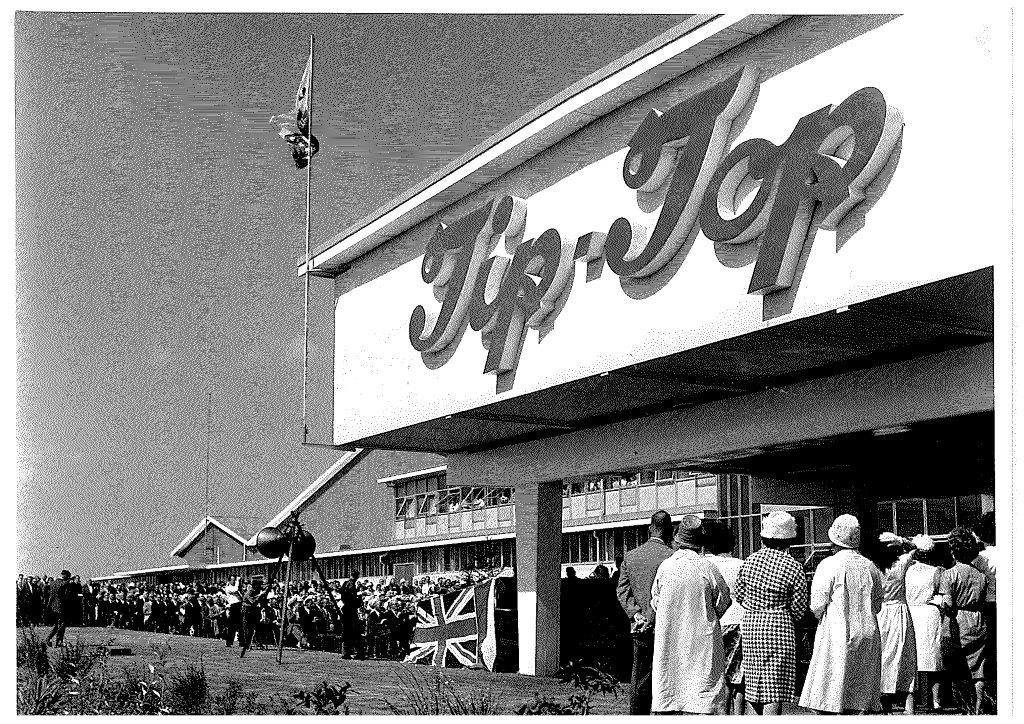
Small beginnings
Tip-Top started in 1936, when two friends, Albert Hayman and Len Malaghan, opened an ice cream parlour in central Wellington’s Manners street.

Ice creams like the Jelly Tip, Choc Bar and Trumpet have been around since the early days, as has Eskimo Pie, a block of vanilla ice cream dipped in a layer of chocolate with no stick.
The company has had several guises, being at one stage part of listed company General Foods Corporation. It was bought by Fonterra in 2001.
Iconic ads
Tip Top is one brand which has truly embedded itself in New Zealand pop culture, says group marketing manager Minna Reinikkala.
There has been some classic advertising over the years, she says, most of it created by ad agency Colenso BBDO, with whom Tip Top has had a long-term relationship.

Take Moggy Man in the 1960s and the 1970s Popsicle Band. Then there were the “Ooh aah ooh!” Fruju ads (above), Trumpet’s “Togs, togs, undies”, and the Memphis Meltdown Sheriff.
In the 1980s, supermodel Rachel Hunter scored her first TV slot aged 15 in a Trumpet ad.

Meanwhile, it was Tip Top which created the goody goody gum drops flavour, which has become part of the country’s vernacular, as has the trumpet, says Reinikkala.
Innovation
There has also been some cool Tip Top innovation over the years, she says.
In 1962, the founders built what was at the time the southern hemisphere’s most advanced ice cream factory.
The company was also the first in the world to create a tripled dipped ice cream. Memphis Meltdown, for example, is dipped in chocolate, then caramel, then chocolate again.
More recently, Tip Top was the first to design machinery to handle large biscuit pieces being added into the body of an ice cream.
The machine has to make sure bits of biscuit stay away from where the stick will be inserted into the ice cream, otherwise the stick could snap.

Ethical ingredients
One of Tip Top’s most difficult decisions in recent times was to take palm oil out of all its products. Customers were becoming increasingly vocal and the company started receiving a lot of anti-palm oil comments on its Facebook page.
Still, the move was surprisingly hard to achieve, Reinikkala says.
The majority of the palm oil in its icecream came from ingredients, like the little pieces of hokey pokey, which were coated with palm oil to stop them melting.
Talking to biscuit, chocolate and other suppliers was a bit of a major, she says. Tip Top, which finally became palm oil-free at the end of 2014, was the first company in the Fonterra group to drop the ingredient totally from its manufacturing – others are following.
Tip Top also made the move to use only natural colours and flavours in their ice creams in 2013. Reinikkala says the company believed it was “the right thing to do”.
And the left-over artificial food colouring? Colenso used it to print the artwork announcing the change.
In 2014, New Zealand ate it’s way through…
- 8.8 million lemonade Popsicles
- 10.5 million Trumpets
- 2.8 million litres of Tip Top vanilla ice cream
- That’s enough to fill one Olympic-sized swimming pool, with a bit of ice cream spilling over.




